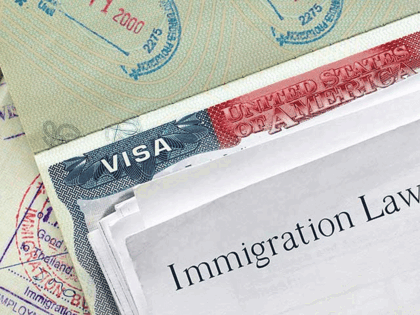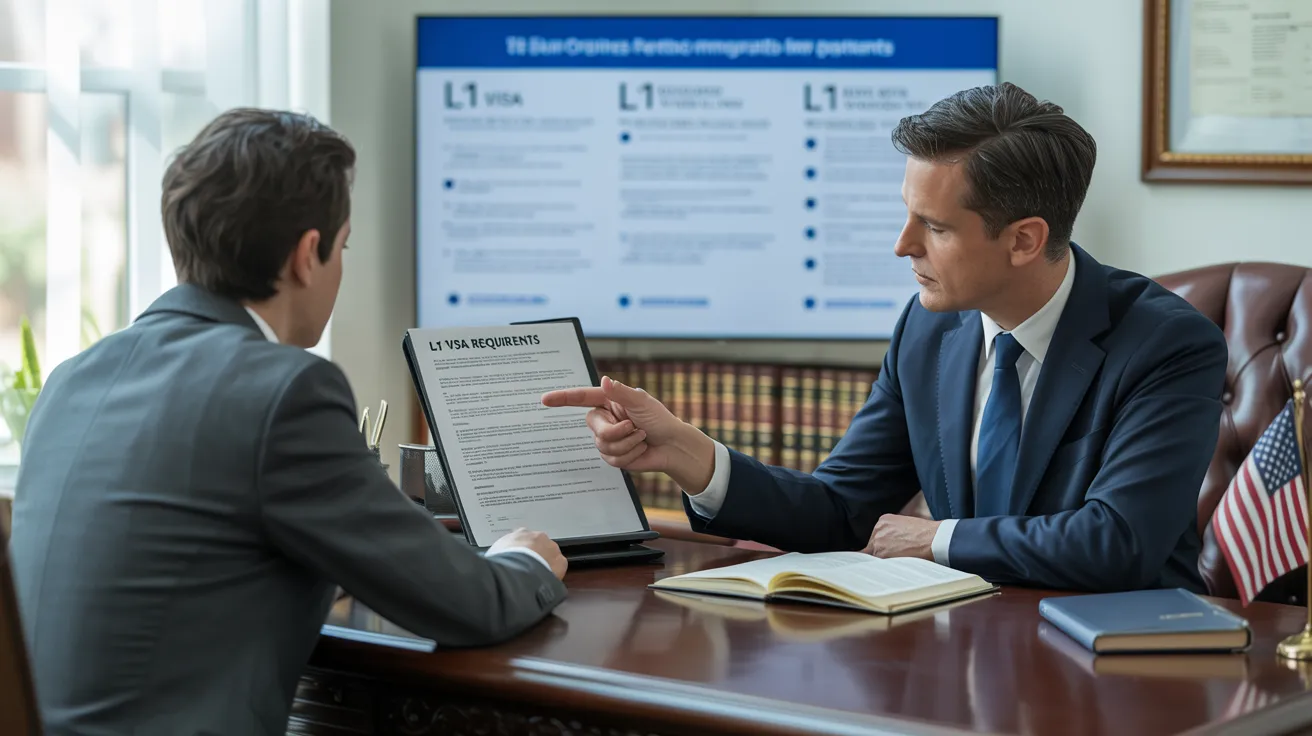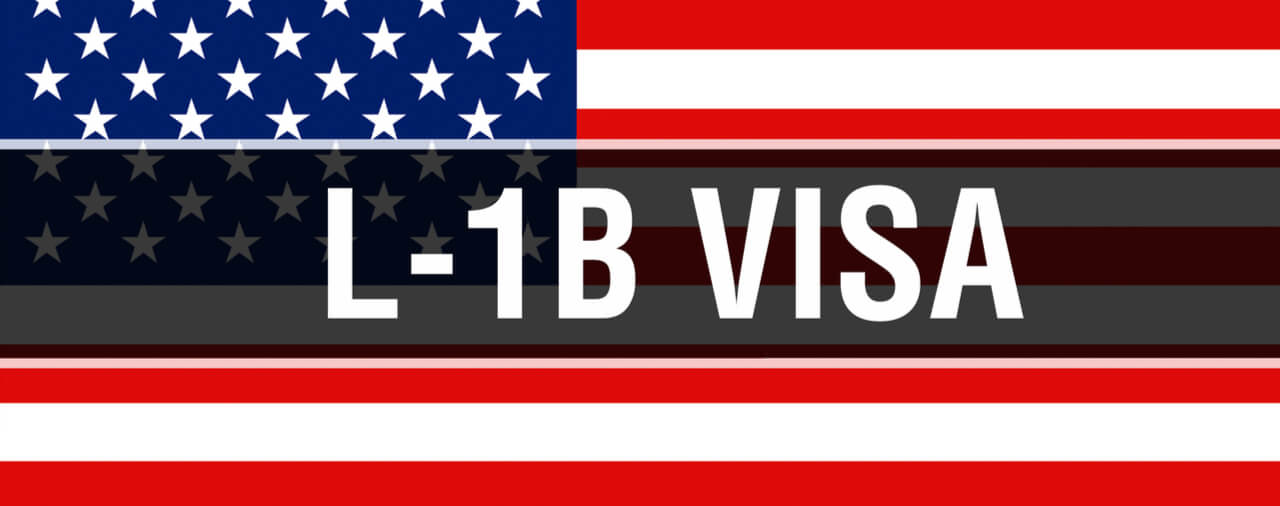Unlocking Opportunities: A Comprehensive Overview to the L1 Visa Process
The L1 visa procedure provides a vital pathway for international companies looking for to transfer essential employees throughout boundaries. Comprehending the subtleties of qualification requirements, the differences in between L-1A and L-1B visas, and the intricacies of the application process can greatly impact an applicant's success. However, navigating this complex landscape is not without its challenges, and careful attention to documentation and employer sponsorship is vital. As we check out the crucial components of this procedure, the methods for overcoming prospective barriers will certainly become apparent, revealing exactly how notified preparation can open up a globe of possibilities.
Comprehending the L1 Visa
Comprehending the L1 visa entails recognizing its relevance as an essential tool for international firms seeking to move experienced staff members in between global offices. This non-immigrant visa classification facilitates the movement of execs, managers, and specialized knowledge employees to the United States, thereby making it possible for companies to keep functional continuity and harness international skill efficiently. The L1 visa is divided into 2 primary classifications: L-1A for managers and execs, and L-1B for employees possessing specialized knowledge.The L1 visa offers a vital role in improving a company's one-upmanship in the international marketplace - L1 Visa Requirements. By enabling companies to relocate their key employees, organizations can ensure that essential jobs are handled by certified people who are already aware of the business's society and functional procedures. This interior transfer device not only cultivates knowledge sharing but also advertises technology and cooperation across borders.Moreover, the L1 visa is often preferred for its fairly straightforward application process compared to various other visa categories, as it permits double intent, permitting owners to seek permanent residency while on a temporary copyright. This function makes the L1 visa especially appealing for both companies and workers, as it streamlines the pathway for skilled experts to establish lasting residency in the USA
Qualification Standards
Qualification for the L1 visa rests on numerous key criteria that assure both the employee and the employer satisfy specific qualifications. This non-immigrant visa is developed for international business to transfer workers from foreign offices to U.S. counterparts.Firstly, the company should be a qualifying organization, which consists of a moms and dad business, branch, affiliate, or subsidiary of an U.S. service. The firm must have been doing company for a minimum of one year both in the U.S. and abroad. This ensures that the firm has sufficient operational security and a legitimate presence.Secondly, the staff member must hold a managerial, executive, or specialized understanding setting. For L1A visas, the applicant must show managerial or executive credentials, while L1B visas concentrate on specialized expertise related to the organization's products, services, or processes. Additionally, the worker must have functioned for the international entity for at the very least one continual year within the last three years prior to their application.Lastly, the staff member's role in the U.S. should line up with their previous placement, ensuring that their abilities and proficiency are leveraged for the business's advantage.
Sorts Of L1 Visas
The L1 visa category comprises two key kinds created to facilitate the transfer of staff members within international companies: the L1A visa for supervisors and execs, and the L1B visa for employees with specialized knowledge. Each type offers distinctive objectives and has specific eligibility criteria.The L1A visa is customized for people that hold managerial or executive positions within a business. This visa enables top-level employees to transfer to a united state branch, subsidiary, or associate of the same company. Applicants for the L1A visa need to demonstrate that they have been used in a managerial or executive capacity for at the very least one constant year within the previous three years prior to their application. Additionally, this visa provides a longer duration of stay, initially granted for three years, with the possibility of expansions for up to seven years.In contrast, the L1B visa is intended for experts with specialized understanding pertaining to the company's products, solutions, or processes. To certify, applicants should prove that their proficiency is crucial to the company and that they have actually benefited at the very least one continual year within the last three years in a duty that needed this specialized expertise. The L1B visa is initially approved for three years, with expansions readily available for approximately 5 years.Both visa kinds are necessary for firms seeking to boost their worldwide operations by leveraging knowledgeable employees, consequently advertising development and effectiveness within the U.S. market.
Application Process
Guiding through the L1 copyright procedure entails a number of crucial actions that need to be thoroughly complied with to ensure an effective result. The procedure begins with the united state employer, who have to first develop qualification by demonstrating a qualifying connection with the international entity and confirming that the employee fulfills the details demands for the L1 visa category being sought.Once eligibility is validated, the company starts the process by submitting Type I-129, the Petition for a Nonimmigrant Worker, with the U.S. Citizenship and Immigration Solutions (USCIS) This type needs to be come with by an in-depth summary of the work obligations to be performed, the business framework of both the U.S. and foreign entities, and the worker's certifications. It's crucial to verify that all details is exact and full, as omissions or mistakes can lead to delays or denials.Upon authorization of the I-129 petition, the next step includes the worker obtaining the L1 visa at a united state embassy or consulate in their home country. This phase needs the conclusion of Type DS-160, the Online Nonimmigrant copyright, and setting up an interview. During the interview, the candidate should offer proof supporting their credentials and the employer's petition.After the visa is provided, the staff member can get in the United States to function in the marked role. On the whole, careful prep work and adherence to each step of the application process are important for a successful L1 visa end result.
Required Documentation

Crucial Types Needed
Navigating the L1 Visa process calls for careful attention to the crucial types and paperwork required for an effective application. The key form needed is the Kind I-129, Petition for a Nonimmigrant Employee, which should be finished and sent by the U.S. company. This kind lays out the details of the employment deal and the qualifications of the worker looking for the L1 Visa.Alongside Form I-129, the applicant will certainly require to total Kind I-539 if coming with family participants are also making an application for visas. In addition, the company should supply proof of the certifying connection in between the united state entity and the foreign entity, commonly demanding the submission of corporate papers such as write-ups of consolidation or monetary statements.Moreover, it is vital to consist of the L Category Supplement to Kind I-129, which specifies the type of L Visa being requested-- either L-1A for supervisors and execs or L-1B for staff members with specialized understanding. Applicants ought to guarantee that all kinds are authorized and dated appropriately, as insufficient submissions can lead to hold-ups or rejections. Effectively setting up these essential forms lays the foundation for a smoother L1 copyright procedure.

Sustaining Evidence Requirements
Sustaining paperwork is crucial for an effective L1 copyright, as it validates the cases made in the request. Candidates need to give a series of documents to demonstrate eligibility for the visa, which is classified into two key types: proof of the qualifying connection between the U.S. and international entities and evidence of the applicant's qualifications.To develop the partnership, applicants must send documentation such as corporate organizational graphes, financial declarations, and proof of ownership. These papers verify that the foreign firm has a certifying connection with the U.S. employer, whether as a moms and dad business, subsidiary, branch, or affiliate.For the candidate's qualifications, essential records consist of a comprehensive employment letter from the international company, detailing the candidate's job title, tasks, and duration of employment. In addition, academic credentials, such as degrees and diplomas, must be provided to show the applicant's proficiency in the appropriate area.
Company Sponsorship Papers

Typical Challenges
Steering the L1 visa procedure presents numerous typical obstacles that applicants should know. Key problems commonly include rigorous paperwork requirements, potential delays in handling times, and the requirement for strict lawful compliance. Understanding these challenges can aid applicants better prepare and minimize risks during their copyright trip.
Paperwork Needs
The L1 copyright procedure typically presents substantial challenges associated to paperwork requirements. Applicants must provide substantial documentation to develop qualification, which can result in complication and potential hold-ups. Secret records include evidence of a qualifying connection in between the united state and foreign employer, evidence of the applicant's work background, and detailed info regarding the work duty in the U.S.One common difficulty is collecting adequate evidence to show the nature of the qualifying connection. Firms often have a hard time to present clear organizational charts or monetary statements that show the connection in between the entities. In addition, making certain that letters of support from companies accurately mirror the applicant's task obligations and qualifications is important, as unclear summaries can result in denials.Another concern develops from the requirement for thorough task summaries that align with the L1 visa categories. Candidates need to express not only their existing role yet also their supervisory or specialized expertise duties clearly. This requires a thorough understanding of both the applicant's placement and the regulatory language made use of in L1 applications.
Processing Time Delays
Experiencing hold-ups in handling times is a common challenge encountered by L1 visa candidates, usually resulting in irritation and unpredictability. A number of variables add to these delays, consisting of high application volumes, raised scrutiny of applications, and management backlogs within the U.S. Citizenship and Immigration Provider (USCIS) Candidates may locate that processing times can vary greatly depending upon the solution facility managing their application, as each facility has its own work and efficiency degrees. Furthermore, the complexity of the applicant's instance, such as the requirement for comprehensive paperwork or explanation, can better expand wait times.In some instances, problems associated with the applicant's current immigration status or previous visa history may also cause additional hold-ups, as USCIS may require more review or details. It is vital for candidates to continue to be positive throughout this period, preserving open communication with their employers and legal reps to attend to any type of prospective concerns promptly.Understanding these handling time challenges can assist L1 visa candidates prepare for possible hold-ups and alleviate the effect on their shift and career strategies. Perseverance and persistance are necessary merits in maneuvering this complex process.
Lawful Compliance Issues
Many L1 visa candidates come across legal conformity concerns that can complicate their journey towards acquiring the visa. Understanding and adhering to the particular laws set by the united state Citizenship and Migration Services (USCIS) is essential. Common obstacles consist of demonstrating the qualifying connection in between the international and united state employers, in addition to verifying that the applicant possesses the requisite specialized understanding or supervisory capacity.Additionally, applicants have to supply extensive paperwork outlining their work obligations, business framework, and financial feasibility of the united state entity. Insufficient or inaccurate documents can result in delays or also denials. Companies must likewise ensure that they comply with labor legislations, consisting of wage and working condition requirements, which can influence visa eligibility.Another usual concern entails keeping compliance with the regards to the visa as soon as approved. Adjustments in work condition, job duties, or firm structure can necessitate changes to the visa, which otherwise resolved quickly can bring about lawful issues. As a result, remaining educated concerning compliance requirements and looking for lawful counsel when required is crucial to navigate the intricacies of the L1 visa process successfully.
Tips for Success
Success in the L1 copyright process frequently hinges on careful prep work and focus to information. To boost your opportunities of approval, begin by extensively understanding the qualification demands for both the L1A and L1B visa groups. Evaluate whether your position at the firm L1 Visa law firm qualifies as supervisory, exec, or specialized understanding, as this classification significantly influences your application.Next, collect substantial documents that validates your cases. This includes business graphes, comprehensive job summaries, and proof of the firm's functional framework. Clear and succinct proof of the certifying partnership in between the U.S. entity and the foreign entity is crucial. Verify that all files are arranged realistically and presented in a specialist way, as this mirrors your commitment and severity concerning the application.Engage the services of an experienced migration attorney that focuses on L1 visas. Their know-how can show invaluable, assisting you via complex laws and guaranteeing that all documents adheres to current regulations. In addition, plan for the meeting by practicing solution to typical concerns and being prepared to review your function and contributions to the company detailed.
Regularly Asked Inquiries
Can Household Members Go Along With the L1 Visa Owner?
Yes, member of the family of L1 visa holders, including partners and single children under 21, can go along with the primary visa holder. They may additionally obtain L2 visas, which enable them to stay in the USA.
How Much Time Can I Remain On an L1 Visa?
The L1 visa permits initial keeps of up to 3 years, with the opportunity of extension. L1A visa owners might remain for an optimum of seven years, while L1B visa holders can stay for 5 years.
Can L1 Visa Owners Request a Permit?
Yes, L1 visa owners can apply for a permit. L1 Visa. They might seek long-term residency with employment-based groups, usually calling for sponsorship from their company, given they meet the needed credentials and documentation needs
What Occurs if My L1 copyright Is Refuted?
If your L1 copyright is refuted, you may obtain a notice detailing the reasons for rejection. You can seek to appeal the choice, reapply, or discover alternate visa alternatives based on your conditions.
Are There Any Kind Of Travel Restrictions With an L1 Visa?
An L1 visa generally allows for international travel; nonetheless, re-entry to the U. L1 Visa.S. is contingent upon maintaining valid status. Tourists need to guarantee conformity with visa problems to prevent problems upon return
Verdict
